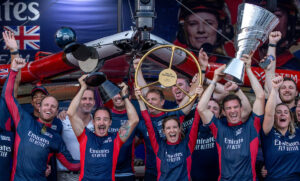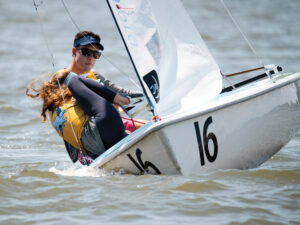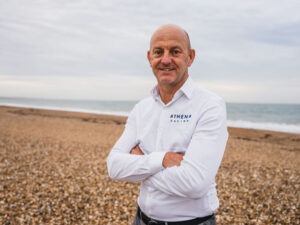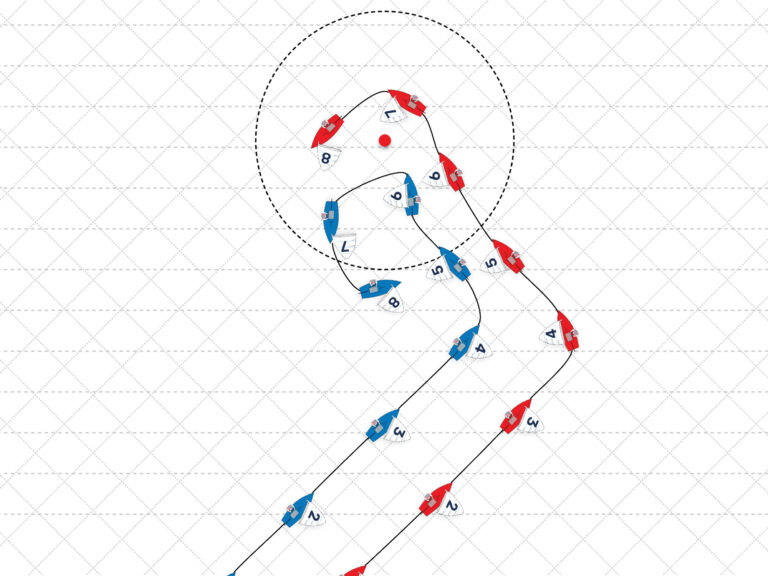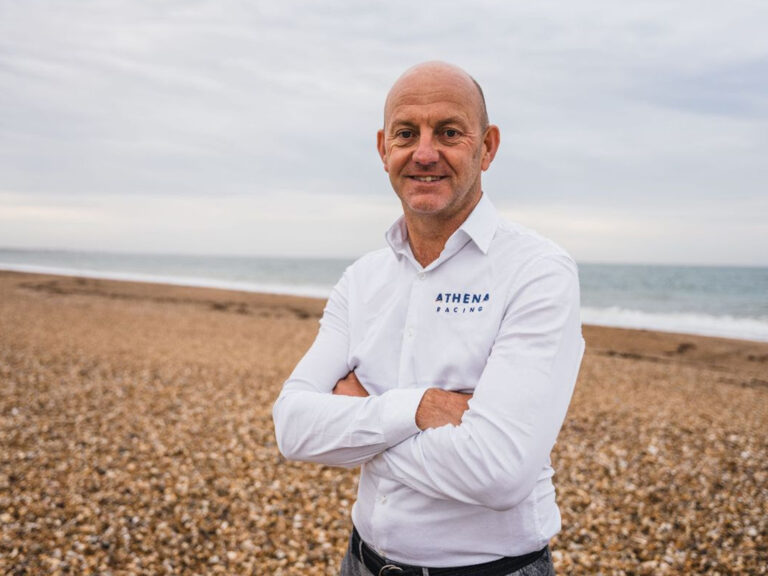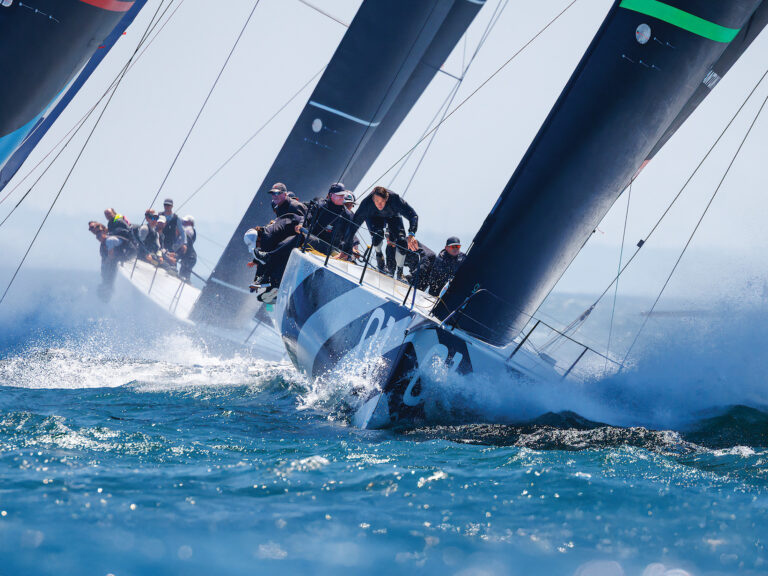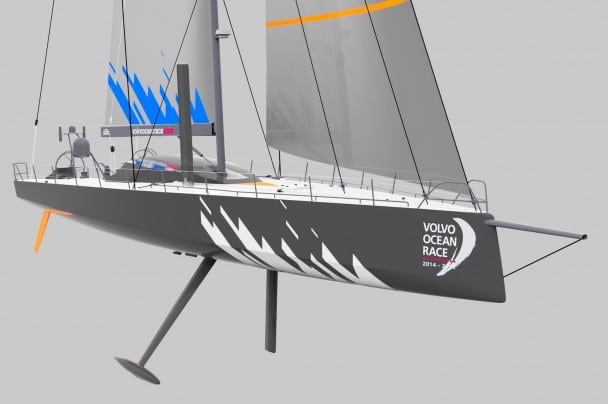
Volvo 65
With the recent announcement that an all-female team has placed a deposit for the first VO 65 One Design, the decision to move to a one-design boat appears to have been vindicated for the next Volvo Ocean Race. “I reckon that with the old boat, the Volvo Open 70, we would not even have thought about this,” says Richard Brisius, head of Atlant Ocean Racing, the management team behind the female SCA team. “The new 65-foot design is still a monster–still a huge boat–but it’s now at least possible, even though you could never say it’s going to be easy.”
The move to a one-design boat is a bold attempt by Volvo Ocean Race management to ensure the viability of the event in these tough economic times. With the average Volvo campaign costing upwards of $30 million in 2012, the Race’s CEO Knut Frostad hopes the new boat will slash the average campaign to $12-15 million for the 2014 race. Frostad has put his money where his mouth is; the Race is financing the construction of the first eight boats. But will a new boat and a $15 million budget be enough to bring eight quality teams to the line in 2014? As of right now, the answer appears to be no.
The reality of the Volvo Ocean Race is that there are two separate events occurring at the same time. There is the sailing race, and the hospitality race. We all know the sailing side, but for the large international corporations the Race is courting as sponsors, it’s the hospitality race that matters most. In the 2009 race_, Ericsson_ was widely believed to have spent almost $30 million on the corporate hospitality side alone. That spending is not included in the campaign costs being thrown around by event management. Granted, Ericsson did outspend other sponsors, but any company looking to use the race as a marketing tool on shore needs to add about $1 million per stopover to cover logistics, hospitality, and staffing. Further, while the costs of the sailing campaign can be diluted over 2.5 years, the spend for hospitality is heavily weighted to a company’s 2014 marketing budget, and a $8-10 million sponsorship for 2014 is a big number for most companies to swallow in this economy. The dark clouds are already building. Before the 2012 race ended, Groupama suggested that they will be prematurely ending their sponsorship with Franck Cammas. Veolia then pulled its sponsorship for Roland Jourdain, and just recently, Foncia terminated the MOD 70 funding to Michel Desjoyeaux after the 2012 season. When worries over the global economy can sideline the heroes of French sailing, heroes who have had some of the longest relationships in the history of the sport with their sponsors, where does that leave potential Volvo entrants?
Spain is also on the verge of pulling out of 2014. While contractually obligated to field a team, Pedro Campos, the leader of the last Telefonica campaigns, has gone on record as stating that there will be no Spanish team in the next race. His reason for pulling out publicly is in protest of the lack of Spanish designers and boatbuilders being used in the new one-design. While it is a valid complaint, anyone who has seen the news knows the Spanish economy is in shambles. Unconfirmed reports suggest that Telefonica only agreed to sponsor this past race after being granted a major tax break by the King of Spain. The economies of Ireland, Portugal, and Italy are in similar shape, so it’s hard to see any funding from companies based in those regions as well, unless another CAMPER/ETNZ partnership can be formed.

Construction on the new VO 65 has begun in Italy. Photo: Rick Deppe/Volvo Ocean Race
Where will the remaining teams for the 2014 race come from then? Looking at past entrants, Abu Dhabi Ocean Racing and Team Sanya both would profit from a one-design race. While ADOR had one of the largest budgets in the last race, the boat was an expensive under-performer. For Sanya, a one-design boat immediately helps them jump up the learning curve. Both sponsors are also eager to promote their regions as international tourist destinations, and have strong economic support. There are also rumors that Dubai will support a campaign if they are awarded the Global Expo in 2020. More than ever, the new economies will be critical to the success of the Volvo Ocean Race, so expect stopovers there again.
Looking at other prior sponsors, both PUMA and Ericsson are wild cards. Ericsson refused to participate in the 2012 race because they felt the cost-cutting rules limited their ability to win. There were high hopes that the sponsor would return in 2014, but if they were unhappy with the past cost cutting, one would assume that the one-design approach is even less palatable. For PUMA, this past race was again a commercial success, yet they nearly sat the race out due to cost. PUMA’s participation has done wonders in elevating the status of the Volvo Ocean Race, and I’m sure the organizers are desperate to keep them on. Whether they choose to sign on the dotted line remains to be seen.
Volvo must find other commercial partnerships soon. The team is keen on securing a Brazilian sponsor again, as South America’s largest economy is still growing, but they still need support from Western Europe and North America to reach their goal of eight fully funded teams. Right now, I wouldn’t be surprised to see a Team Volvo enter this race if there looks to be a boat without a sponsor by mid-2013.
While we, the fans of the Volvo Ocean Race, still hang on to fond memories of the past race (above), the race to win the next Volvo Ocean Race has already begun in corporate boardrooms across the globe. Let’s hope the silver lining of the Race can overcome the dark clouds.


